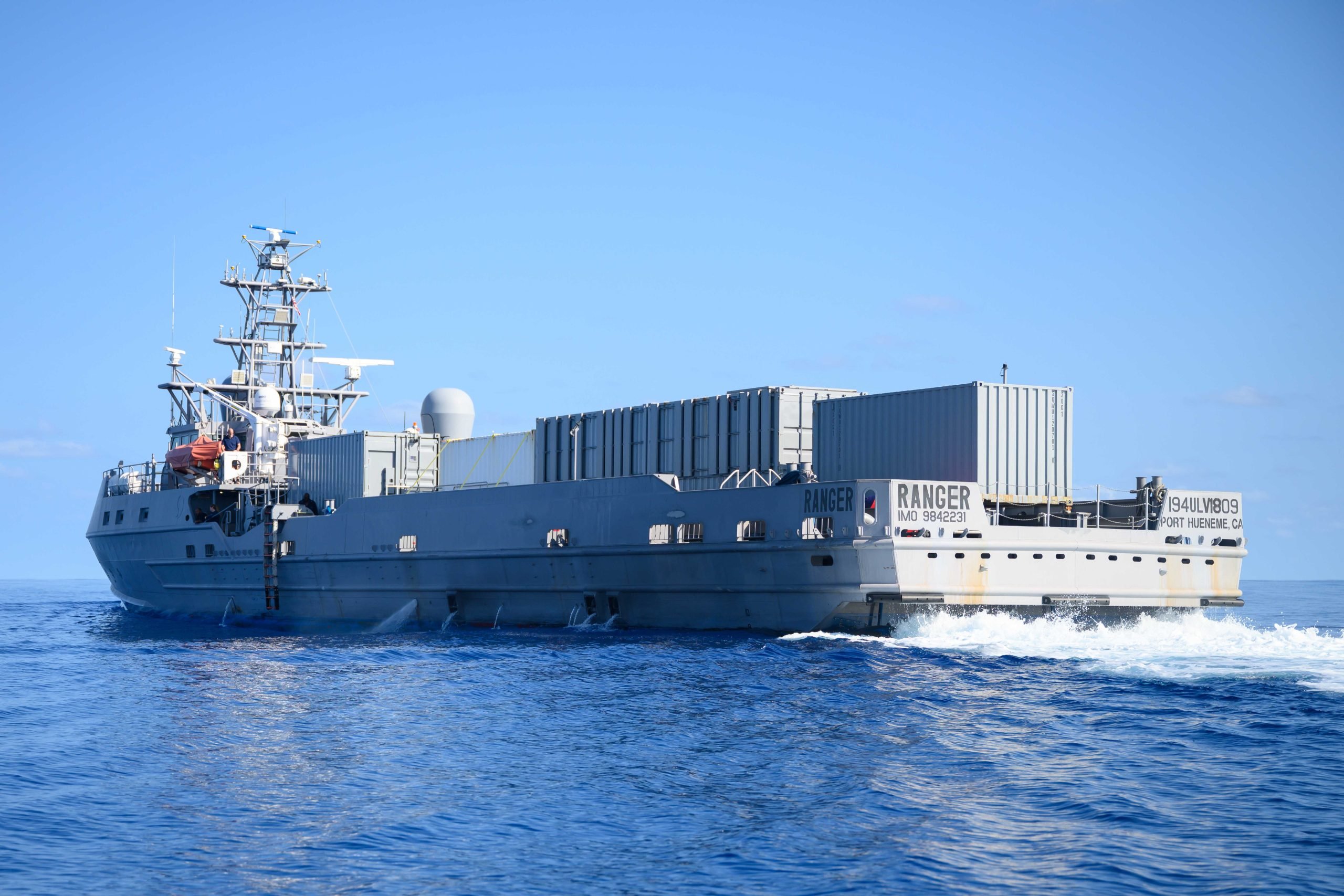
The Navy wants information from industry for its Large Unmanned Surface Vessel, as the service finishes requirements before buying the first ship in the next fiscal year.
In a request for information solicitation posted Friday, Naval Sea Systems Command asked industry for input on its fleet of LUSVs for anti-submarine and strike warfare missions.
The RFI comes as the Navy works on the capabilities development document that will underpin the requirements for the LUSV.
“LUSV is a high-endurance, affordable asset capable of weeks-long deployments and trans-oceanic transits,” the government solicitation reads.
“LUSV will be built to commercial American Bureau of Shipping (ABS) vice military standards. As an adjunct magazine, LUSV will operate with Carrier Strike Groups (CSG), Expeditionary Strike Groups (ESG), Surface Action Groups (SAG), and individual manned combatants.”
The Navy plans to buy the first LUSV in Fiscal Year 2025, according to the service’s FY 2024 budget documents.
“The LUSV will be capable of autonomous navigation, transit planning, and COLREGS compliant maneuvering and will be designed with automated propulsion, electrical generation, and support systems,” the FY 2024 budget documents read.
“LUSV missions will be conducted with operators in-the-loop (with continuous or near-continuous observation or control) or on-the-loop (autonomous operation that prompts operator action/intervention from sensory input or autonomous behaviors).”
To adhere to Congressional stipulations, before contracting the first ship, the Navy must finish a land-based test site for LUSV that runs for 30 days.
The Navy has spent years experimenting with its unmanned prototypes after Congress pumped the brakes on the service’s pursuit of LUSV over concerns that it was moving too quickly in pursuing the new technology.
“LUSVs with integrated payload capability and prototypes employing non-organic payloads will not be capable of autonomous payload engagement or execution of a complete detect-to-engage sequence,” according to the FY 2024 budget books. “The vessel will be incapable of payload activation, deactivation, or engagement without the deliberate action of a remote, off-hull human operator in the command and control loop.”
The Navy planned to finish the requirements for LUSV this calendar year, former Chief of Naval Operations Adm. Mike Gilday said in April.
The service sought $117.4 million in research and development funding for LUSV in FY 2024. After buying the first LUSV in FY 2025, the Navy plans to buy three each year starting in FY 2027, according to the FY 2024 long-range shipbuilding blueprint.
In 2020, the Navy issued $42 million in LUSV study contracts to Austal USA, Huntington Ingalls Industries, Fincantieri Marinette, Bollinger Shipyards, Lockheed Martin and Gibbs & Cox, with each company receiving $7 million.





